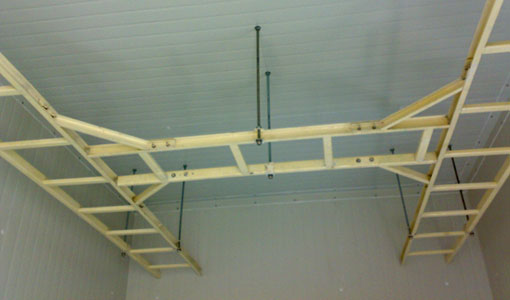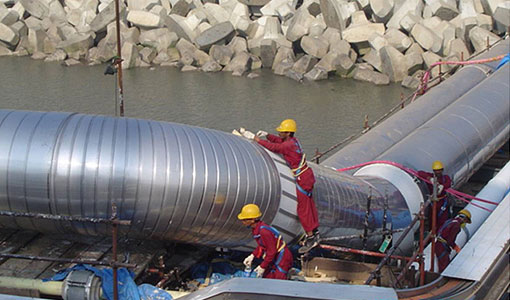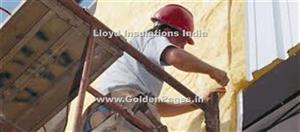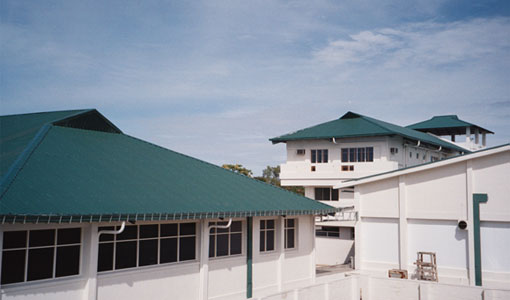LLOYD INSULATIONS INDIA LTD.
Featured Products
Highest quality standards are achieved through the implementations of latest technology, decades of experience and everlasting moral values , which have helped us to retain our customers as well as multiply them.
Welcome to LLOYD INSULATIONS INDIA LTD.
Isothane Ema

ISO THANE EMA elastomeric membrane is a liquid applied coating based on urethane perpolymers which cure by reaction with atmospheric moisture to give a continuous film which is elastic. It contains leafing aluminium which gives execellent U.V. resistance.
ISOTHANE EMA is a very high solids coating designed to give a high build film. It can be brush or spray applied (with airless spray equipment) but it has a higher viscosity than a conventional paint and should not be diluted.
ISOTHANE EMA curves to a permanently flexible seamless membrane which, by virtue of its chemical reactivity in the wet state has good adhesion to a wide ranges of substrates (given proper preparation) such as roofing asphalt, slates, tiles, asbestos, concrete, brick, wood, glass and metals. Unlike more traditional bitumen based product ISOTHANE EMA does not readily embrittle with age, exposure to ultra violet radiation or weathering and hence it does not crack or craze.
Since it is elastomeric ISOTHANE EMA is not adversely affected by extremes of temperature, consequently it does not crack at low temperatures or suffer thermal flow at elevated temperatures.
ISOTHANE EMA can be applied by brush, airless spray or roller without the need to mix, stir or heat before application.
APPLICATION
ISOTHANE Elastomeric Membranes are designed to bond to many types of substrate particularly those commonly used as roofing, such as felt, asphalt, slate, tiles, asbestos, concrete, brick, wood, glass and metals. They can also be applied to sprayed polyurethane (p.u) foam insulation. However, it is essential that substrate and structures are properly prepared, and stable.
Surface previously treated with silicon based materials will inevitably be difficult to overcoat and this should not be attempted with IOSTHANE products.
Substrates with poor adhesion to the underlying structure (e.g. blistered roofing felt) may also cause problems in providing sound over-coating.
Preferential vapour drive in building must also be borne in mind when over coating the roof and it may be judged expedient to employ ventilation to cope with transmission of high levels of moisture vapour.
METHOD OF APPLICATION
The dry film thickness(DFT) of ISOTHANE EMA, should not be less than 0.5mm or more than 1.0mm for each coat. Rough or textured surfaces will reduce the coverage rate and consequently more material must be allowed to achieve the minimum D.F.T. IOSTHANE EMA is a membrane coating, not a paint and as such protection is only achieved with a high film build, i.e. 1mm minimum. It is therefore essential that this is achieved. The membrane can be applied in one 1mm or two 0.5mm coats. Two coats are recommended on uneven and jointed surfaces to minimise the possibility of thin patches, missed areas and pinholing. In case of two coat application, it is important to recoat within 24 hours of the coat becoming sufficiently curved to allow operator access.
DO not dilute ISOTHANE EMA
Method
- Remove all loose material by vigorous brushing. Wire brush if necessary.
- Treat any remaining fungal growth with proprietary fungicide as recommended.
- Allow surface to dry thoroughly and any moisture contained in the structure to evaporate. Isothane special primer and EMA should not be applied to damp substrates.
- Fill cracks and voids with a mastic sealant.
- Prime with Isothane special primer (6-10 m2/lt) depending on substrate texture and porosity) when cures to a slightly tacky film in 2-4 hours. Overcoat with Isothane EMA as sson as possible after this time and certainly within 48 hours. If delay exceeds this, re-priming is advised.
- Apply Isothane EMA at a maximum film thickness of 0.5mm for two coat applications and 1mm for one coat.
- In the case of two coat application, the first coat should be touch dry in 12-48 hours (in some conditions this might be delayed) and the second coat should be applied within 24 hours of this stage to ensure good adhesion.
- Second coat delay:- if more than 24 hour elapse after the touch dry stage of the first coat, prime the entire surface with special with special primer and allow to dry before recoating within 4-8hours.
- Day-work joints- where application extends over more than a working day, an overlap of 15mm should be used.
- Aromatic hydrocarbon solvent should be used to clean equipment etc.
Spray application
Only airless spray should be used
Graco king 60 to 1 ratio or similar
Compressor: 100psi, 60cft min.
Tip Siz: 28/30 thou. 60° Angle.APPLICATION RATE
ISOTHANE EMA is easily and quickly applied manually at a rate of 40m2 per man hour or up to 600 m2 per day by spray application.REPAIRS
Minor damage to ISOTHANE EMA, can be repaired by removing loose membrane, cleaning the surrounding area with aromatic hydrocarbon solvent overlapping by 150mm, priming the area with special primer and finishing with two coats of IOSTHANE EMA.COVERAGE
Coverage rate may vary with surface texture and porosity. The information given is based on average usage. A site trial is recommended.
ISOTHANE special primer 6-10m2/lt
ISOTHANE EMA 1kg (0.8lt)/ m2 on a smooth surface will provide and adequate film thickness of approx 1mm. Any surface texture will increase the surface area which must be allowed for when calculation usage- e.g. on a chipping embedded surface the actual area will be approximately doubled.STORAGE
Store in a cool place and avoid unnecessary opening of cans. In very cold conditions inside before using - do not attempt to thin.
Once opened ISOTHANE EMA will start to cure and a skin will form, even on re-sealed cans. This can be removed if material is used within approximately a month.HEALTH & SAFETY
The recommendations in our material safety data sheet (MSDS) ref. 05 should be followed at all times.-
- Paints products UN 1263.
- Keep out of reach of children.
- Keep away from sources of ignition.
- No smoking.
- Do not breathe vapour / spray.
- Ensure good ventilation during application and drying.
- In case of eye contact- wash with plenty of clean water and seek medical advice.
- Avoid prolonged skin contact; wear suitable protective clothing and gloves.
- Remove from skin with mild solvent / hand cleanser and wash with warm soapy water.
- Contains isocyante, specific information available on request.
- Note: More details on the above are available in lidquid polymers publication "A Guide to the safe Handling of polyurethane Resins." This document should be consulted before use of any ISOCYANATE based materials.
-
Our Vision
* To embrace new technologies and methods. * To give unsurpassed products and services to the clients. * To constantly look for improvement and changes.










